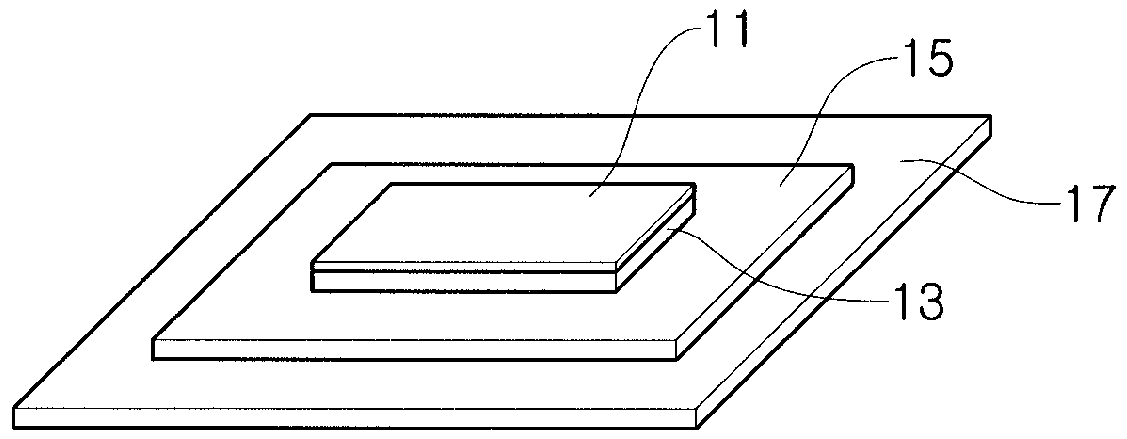Method for exfoliating carbonization catalyst from graphene sheet, method for transferring graphene sheet from which carbonization catalyst is exfoliated to device, graphene sheet and device using the graphene sheet
a carbonization catalyst and graphene sheet technology, applied in the direction of physical/chemical process catalysts, metal/metal-oxide/metal-hydroxide catalysts, paper/cardboard containers, etc., can solve the problem of easy and achieve the effect of preventing the damage of graphene sheets and easy damag
- Summary
- Abstract
- Description
- Claims
- Application Information
AI Technical Summary
Benefits of technology
Problems solved by technology
Method used
Image
Examples
experiment 1
[0078][ Variation in composition of binder layer]
[0079]An about 0.5 mm-thick nickel plate with a size of about 1.2 cm×about 1.5 cm is prepared as a film-shaped carbonization catalyst. The nickel plate is positioned in a chamber, and heat-treated at about 1,000° C. for about 5 minutes using a halogen lamp heater while supplying acetylene gas into the chamber at a constant rate of about 200 sccm in order to form graphene on the film-shaped carbonization catalyst (i.e., on the nickel plate).
[0080]Subsequently, after removing the heater, the inside of the chamber is cooled rapidly. Graphene is thus grown to have a uniform spatial arrangement, and in this way an about 10-layered graphene sheet with a size of about 1.2 cm×about 1.5 cm is obtained.
[0081]On the about 10-layered graphene sheet, a coating layer of a binder material and a substrate (PET) are formed. The binder layers are formed to have a thickness of about 1 μm.
[0082]The coating of the binder material is carried out so that th...
experiment 2
[0095][Experiment 2: Inclusion of wetting agent]
[0096]A graphene sheet is obtained in the same manner of Example 1 of Experiment 1, except for the differences in the wet etching step as noted hereinbelow.
[0097]As etchant solution for wet etching, about 55 ml, about 40 ml and about 25 ml of about 60 wt % nitric acid (HNO3) solutions are prepared. Potassium perfluorooctanesulfonate (wetting agent) of the following Chemical Formula 1 is added to nitric acid (sat.) to prepare about 15 ml, about 30 ml and about 55 ml of etching solutions having about 0.5 wt % wetting agent.
[0098]The volume of water is fixed at about 45 ml, and the volume of the wetting agent solution and the about 60 wt % nitric acid solution is controlled as in the following Table 3 in order to control the concentration of the wetting agent in the entire etchant solution.
TABLE 3Example 1Example 2Example 3Example 4Nitric acid solution (about 60 wt %)—About 25 mlAbout 40 mlAbout 55 mlWetting agent solution [about 0.5About...
PUM
| Property | Measurement | Unit |
|---|---|---|
| Fraction | aaaaa | aaaaa |
| Fraction | aaaaa | aaaaa |
| Thickness | aaaaa | aaaaa |
Abstract
Description
Claims
Application Information
 Login to View More
Login to View More - R&D
- Intellectual Property
- Life Sciences
- Materials
- Tech Scout
- Unparalleled Data Quality
- Higher Quality Content
- 60% Fewer Hallucinations
Browse by: Latest US Patents, China's latest patents, Technical Efficacy Thesaurus, Application Domain, Technology Topic, Popular Technical Reports.
© 2025 PatSnap. All rights reserved.Legal|Privacy policy|Modern Slavery Act Transparency Statement|Sitemap|About US| Contact US: help@patsnap.com



